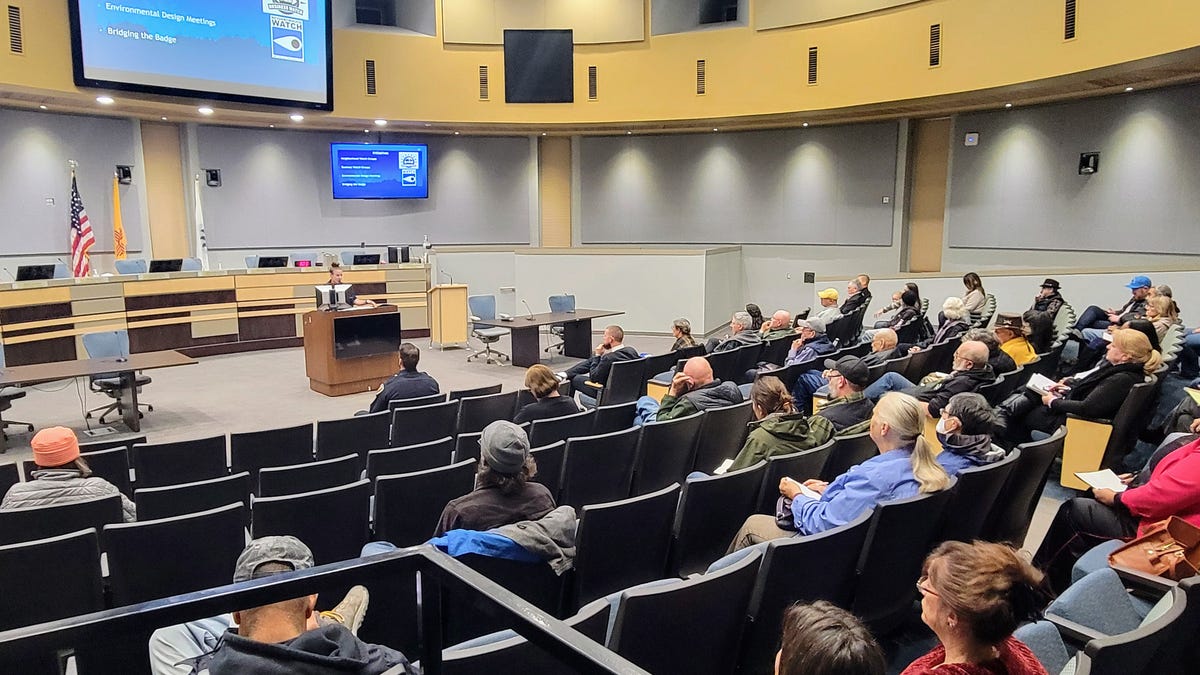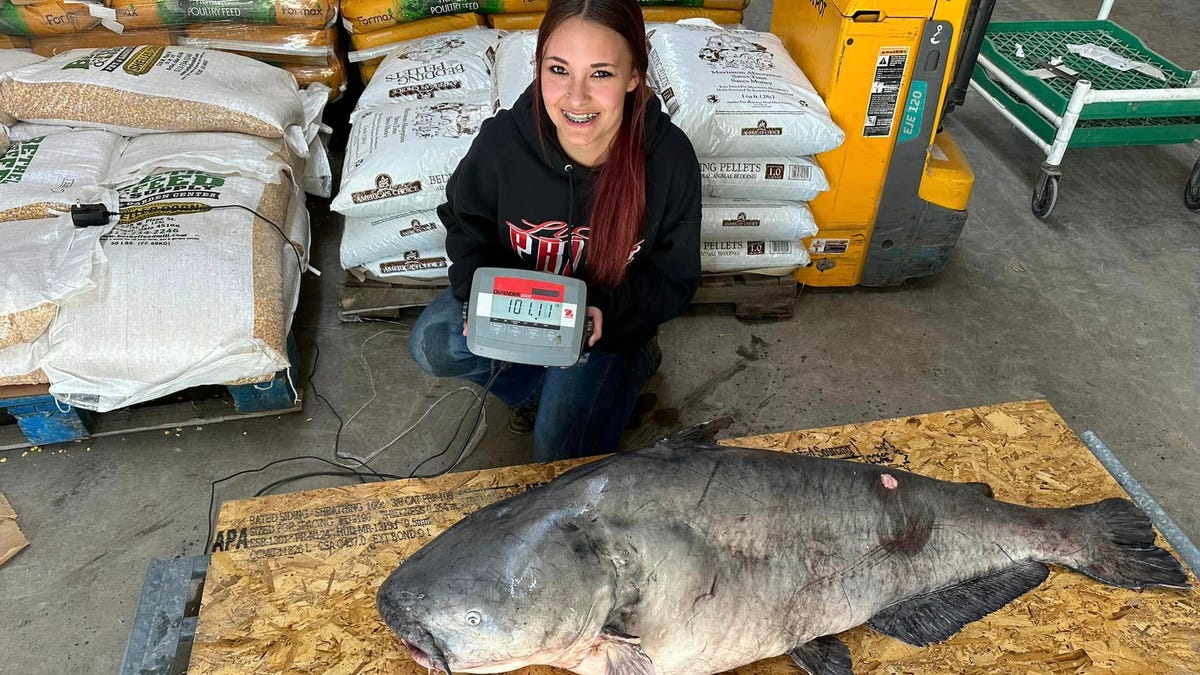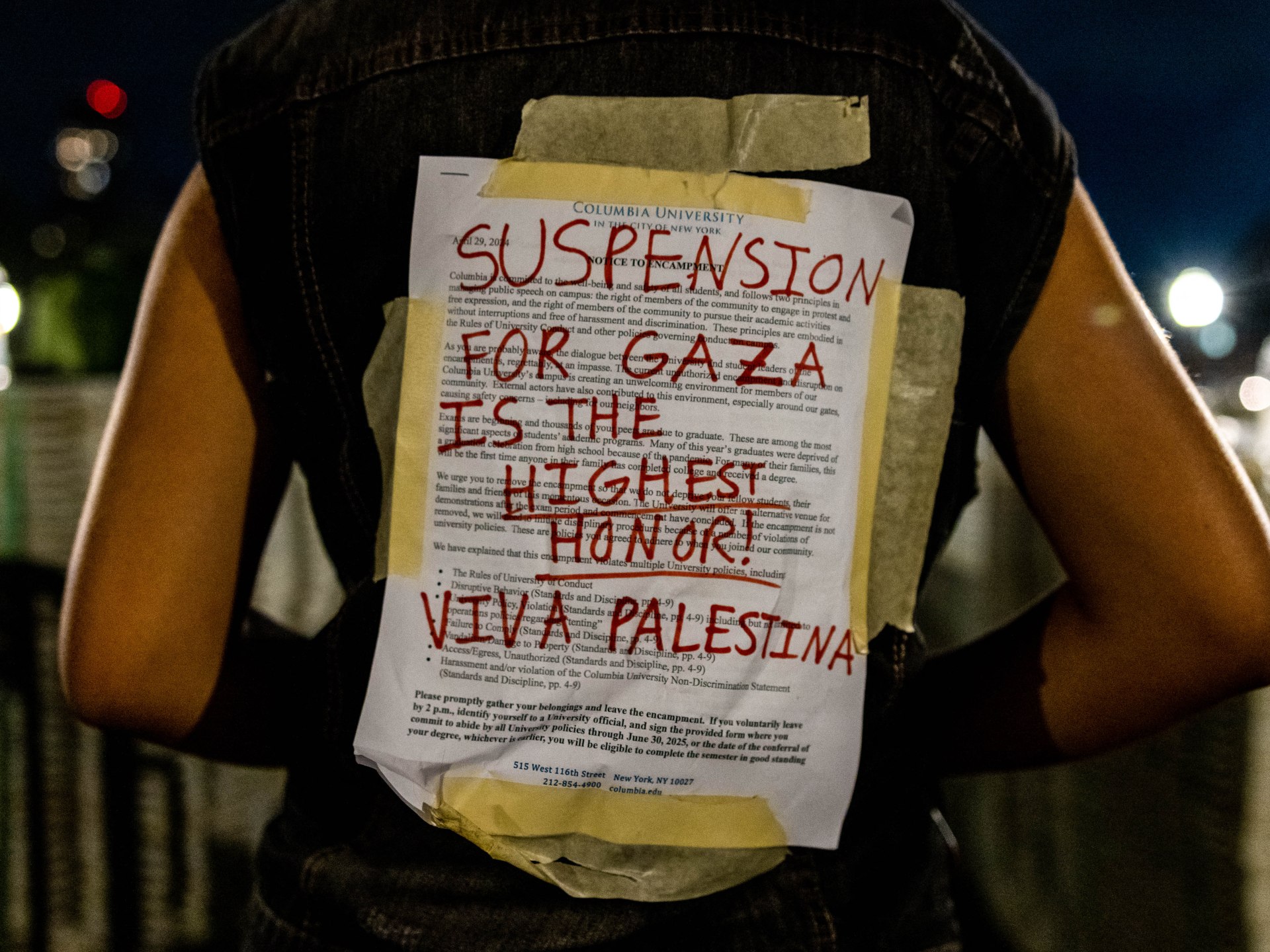New Mexico
Lengthy to-do list before NMFA begins approving $125 million in new housing loans • Source New Mexico

The head of the state’s finance authority tasked with doling out a windfall of housing loans said the authority is on track to OK loans in the fall — so long as what she called the “timeline gods” are merciful.
In the legislative session that wrapped up in February, lawmakers approved $125 million for the New Mexico Finance Authority to spend on workforce housing development and affordable housing infrastructure. Workforce housing is generally aimed at those who exceed income thresholds that would qualify them for subsidies.
It’s a big windfall for the relatively new Opportunity Enterprise Revolving Fund created in 2023 for commercial development and then amended legislatively to include housing. Under the new law this year, the fund will be used to address the statewide housing crisis. The state lacks at least 32,000 affordable housing units, according to a recent study.
Citing the pressing need, Gov. Michelle Lujan Grisham, when she signed the legislation in late February, challenged the authority to approve loans by the fall.
Marquita Russel, CEO of the authority, told Source New Mexico on Friday that the authority has much to do before it can get that money out the door, and staff will be “threading the needle” to get it done by then.
House Bill 195, which goes into effect May 15, requires the authority to add new board members with expertise in housing and also create new rules governing the loan program. State rulemaking requires 45-day public comment periods, and the new board won’t be able to approve the initiation of draft rules until they convene after the law goes into effect.
The rules will be subject to multiple hearings, and the board will have to incorporate public comments once they are submitted, Russel said.
“It’s a lengthy process,” she said. “It requires a lot of transparency and public hearing, and then notices, so it can’t happen quickly.”
NM housing agency predicts increase in foreclosures on home loans it oversees
But when the application process opens, she hopes by late summer, private developers will have access to low interest loans to help build roads, sewers and other infrastructure to affordable housing projects or to build new housing for people, like many police officers and teachers, who can’t afford to live in the communities where they work.
The fund as it exists now provides commercial loans at 60% of the Wall Street Journal prime interest rate on the day it is issued. That rate Friday was 8.5%.
Russel said she’s not sure whether the funds will go primarily for affordable housing infrastructure or workforce housing, or whether it will go to nonprofits or private developers. But she added that she believes there is a high demand for workforce housing and few places for developers to go for financing.
Lawmakers this session also approved $50 million for the Mortgage Finance Authority’s Housing Trust Fund, which is geared for affordable housing programs and development.
Taken together, the $175 million — plus $20 million to address homelessness and other individual housing projects — is the biggest housing investment in the Legislature’s history, aimed to boost new development of low- and middle-income housing.
Another bill passed this session, Senate Bill 216, adds nonprofit housing developers to a list of possible recipients of low interest loans for the NMFA’s Public Project Revolving Fund. That fund was established in 1992 for local government projects, but amended to let nonprofit housing agencies apply.
However, Russel said no nonprofits who apply will be authorized to receive that money until the next legislative session, when lawmakers sign an annual bill approving recipients.
But Russel said she hopes that fund, when it’s finally available, will end up becoming the go-to source of capital for housing nonprofits, leaving the $125 million fund for for-profit developers, “because there isn’t another place for those,” she said.
GET THE MORNING HEADLINES DELIVERED TO YOUR INBOX

New Mexico
NMED reaches record-high million settlement in gas flaring case – NM Political Report

A state agency reached a settlement agreement with an oil and gas company as New Mexico continues to crack down on air pollution from that sector. The New Mexico Environment Department announced the $24.5 million settlement with Ameredev II, LLC on Monday. This is the largest settlement that NMED has ever reached for violations of […]
A state agency reached a settlement agreement with an oil and gas company as New Mexico continues to crack down on air pollution from that sector.
The New Mexico Environment Department announced the $24.5 million settlement with Ameredev II, LLC on Monday. This is the largest settlement that NMED has ever reached for violations of regulations governing oil and gas and the majority of that money will go to the state’s general fund.
The state alleges that Ameredev flared off natural gas at five facilities between October 2018 and April 2020 because it did not have the ability to transport that gas to downstream processing facilities.
Gov. Michelle Lujan Grisham praised the settlement as holding bad actors accountable for emissions. The governor, who has tried to present herself as a leader in addressing climate change, vowed to address emission from the oil and gas industry in 2019 after taking office.
“This settlement makes one thing crystal clear – companies that pollute our air will pay for circumventing New Mexico’s rules,” Lujan Grisham said in a press release. “Today’s settlement is about penalizing the bad actors in an effort to protect communities from breathing harmful pollution.”
A company spokesman said that Ameredev is taking the issue seriously and has not had any excess flaring-related emissions over the last four years. This is in part because of Ameredev’s significant and ongoing investments in advanced technologies and operational enhancements, he said.
“We are pleased to resolve this legacy issue, and look forward to continuing to responsibly work with the State of New Mexico and regional stakeholders to support the state’s economic development as well as American energy security,” Ameredev said in the statement emailed to NM Political Report.
While the settlement is the largest that NMED has reached for oil and gas emissions violations, it is much less than the company could have paid had it not agreed to the settlement and taken actions to address the pollution. NMED’s Environmental Protection Division fined Ameredev $40.3 million through an administrative compliance order in June.
“Let this serve as a wake-up call to the oil and gas industry – the Environment Department is using remote sensing technology, on-the-ground inspections, and responding to citizen complaints,” Environment Department Cabinet Secretary James Kenney said in a press release. “The only option to avoid enforcement is to comply with state rules and permits.”
NMED’s inspection of Ameredev facilities in 2019 came after Lea County residents who were concerned about the flaring contacted the state agency.
During a year and a half of operations, Ameredev allegedly flared off more than 3.2 million thousand cubic feet of natural gas. That gas released emissions equivalent to heating 16,640 homes for an entire year. In addition, the flaring also resulted in more than 7.6 million pounds of excess hydrogen sulfide, sulfur dioxide, nitrogen oxides, carbon monoxide and volatile organic compounds being released into the atmosphere.
“This settlement holds the company accountable for failing to follow the terms of their permit and improperly releasing a substantial amount of natural gas into the environment,” General Counsel Zachary Ogaz said in a press release. “We will continue to strictly enforce NMED permits and New Mexico air regulations and show companies that cutting corners and violating the law won’t save you any money in the long run.”
Nitrogen oxides and volatile organic compounds react with sunlight to form ozone, or smog, which can lead to unhealthy air quality. Areas of New Mexico where oil and gas production is common tend to have higher levels of ozone and some of them are facing what is known as noncompliance. Noncompliance occurs when ozone levels exceed federal air quality standards. This can lead to sanctions from the federal government, including loss of funding for transportation projects.
Hydrogen sulfide and sulfur dioxide can also cause health problems, including respiratory issues.
NMED states that the pollutants can also lead to impaired cognition and convulsions among those exposed and also contributing to climate change.
Prior to NMED issuing the administrative compliance order, Ameredev hired a third-party contractor to review how the company was complying with state requirements. The company also provided those results to NMED’s Air Quality Bureau.
According to NMED, Ameredev is now in compliance with the state rules and regulations.
As part of the settlement agreement, the company will hire a third-party contractor to perform an independent audit of its operations at all of the facilities it operates or owns in the state. It will also submit monthly reports that include calculations of actual emissions rates from facilities in New Mexico.
It will also propose a mitigation project that NMED may approve that will lead to weekly optical gas imaging inspections at facilities or the implementation of leak and repair monitoring technology.
Finally, Ameredev agreed to remove equipment from the Azalea Central Tank Battery.
The settlement comes amid a crackdown on pollution that has led to various agreements, including settlements with Apache Corporation, Matador Production Company and Mewborne Oil Company. The settlements stem from alleged emissions that occurred prior to the ozone precursor rule that went into effect in 2022.
Should Ameredev fail to fulfill its obligations under the settlement agreement, the company could face fines of $2,000 per day.
“I am grateful to our dedicated and hard-working compliance and enforcement staff who worked diligently to bring this case to fruition,” NMED Compliance and Enforcement Section Chief Cindy Hollenberg said in a press release. “The Air Quality Bureau is committed to deterring noncompliance such as this and leveling the playing field for those companies that prioritize protecting the environment.”
New Mexico
The 'Passion' returns to the New Mexico Performing Arts Society

New Mexico
CDC: 'Vampire facials' at an unlicensed spa in New Mexico led to HIV infections in three women
Three women were diagnosed with HIV after getting “vampire facial” procedures at an unlicensed New Mexico medical spa, the Centers for Disease Control and Prevention said in a report last week, marking the first documented cases of people contracting the virus through cosmetic services using needles.
Federal health officials said in a new report that an investigation from 2018 through 2023 into the clinic in Albuquerque, VIP Spa, found it apparently reused disposable equipment intended for one-time use, transmitting HIV to clients through its services via contaminated blood.
WHAT IS A VAMPIRE FACIAL? IS IT SAFE?
Vampire facials, formally known as platelet-rich plasma microneedling facials, are cosmetic procedures intended to rejuvenate one’s skin, making it more youthful-looking and reducing acne scars and wrinkles, according to the American Academy of Dermatology.
After a client’s blood is drawn, a machine separates the blood into platelets and cells.
The plasma is then injected into the client’s face, either through single-use disposable or multiuse sterile needles.
Vampire facials have gained popularity in recent years as celebrities such as Kim Kardashian have publicized receiving the procedure.
HIV transmission via unsterile injection is a known risk of beauty treatments and other services, officials say.
Despite this, the Academy says vampire facials are generally safe.
Health officials say spa facilities that offer cosmetic injection services should practice proper infection control and maintain client records to help prevent the transmission of bloodborne pathogens such as HIV.
HOW WERE THE HIV CASES LINKED TO THE SPA?
The New Mexico Department of Health was notified during summer 2018 that a woman with no known HIV risk factors was diagnosed with an HIV infection after receiving the spa’s vampire facial services that spring.
Four women — former spa clients — and one man — the sexual partner of one of the spa clients but who did not receive services at the spa himself — received HIV infection diagnoses there during 2018-2023. Analysis showed similar HIV strains among all cases, according to the CDC’s report last week.
The HIV diagnoses for two of these patients “were likely attributed to exposures before receipt of cosmetic injection services,” according to the CDC.
Evidence suggested that contamination from services at the spa resulted in the positive HIV infection tests for the other three patients.
Health officials found equipment containing blood on a kitchen counter, unlabeled tubes of blood and injectables in the refrigerator alongside food and unwrapped syringes not properly disposed of. The CDC report said that a steam sterilizer, known as an autoclave — which is necessary for cleaning equipment that is reused — was not found at the spa.
ARE ANY OTHER PATIENTS AT R
ISK?
Through the New Mexico Department of Health’s investigation, nearly 200 former clients of the spa, and their sexual partners, were tested for HIV, and no additional infections were found.
According to the CDC, free testing remains available for those who previously frequented the spa.
WHAT HAPPENED TO THE SPA OWNER?
The former owner of VIP Spa, Maria de Lourdes Ramos de Ruiz, pleaded guilty in 2022 to five felony counts of practicing medicine without a license, including conducting the unlicensed vampire facials.
The New Mexico Attorney General’s office said Ramos de Ruiz also did illegal plasma and Botox-injection procedures.
According to prosecutors, inspections by state health and regulation and licensing departments found the code violations, and the spa closed in fall 2018 after the investigation was launched.
Ramos de Ruiz was sentenced to 7 1/2 years, with four years being suspended on supervised probation, 3 1/2 years time in prison and parole, according to court documents.
Raul A. Lopez, attorney for Ramos de Ruiz, did not immediately respond to requests for comment.
___
Alexa St. John is an Associated Press climate solutions reporter. Follow her on X, formerly Twitter, @alexa_stjohn. Reach her at [email protected].
-

 World1 week ago
World1 week agoShipping firms plead for UN help amid escalating Middle East conflict
-

 Politics1 week ago
Politics1 week agoICE chief says this foreign adversary isn’t taking back its illegal immigrants
-

 Politics1 week ago
Politics1 week ago'Nothing more backwards' than US funding Ukraine border security but not our own, conservatives say
-

 Education1 week ago
Education1 week agoVideo: Dozens of Yale Students Arrested as Campus Protests Spread
-

 News1 week ago
News1 week agoThe San Francisco Zoo will receive a pair of pandas from China
-

 World1 week ago
World1 week agoBrussels, my love? The EU single market is not sexy enough for voters
-

 World1 week ago
World1 week agoEU sanctions extremist Israeli settlers over violence in the West Bank
-

 Politics1 week ago
Politics1 week agoDemocrats hold major 2024 advantage as House Republicans face further chaos, division




















